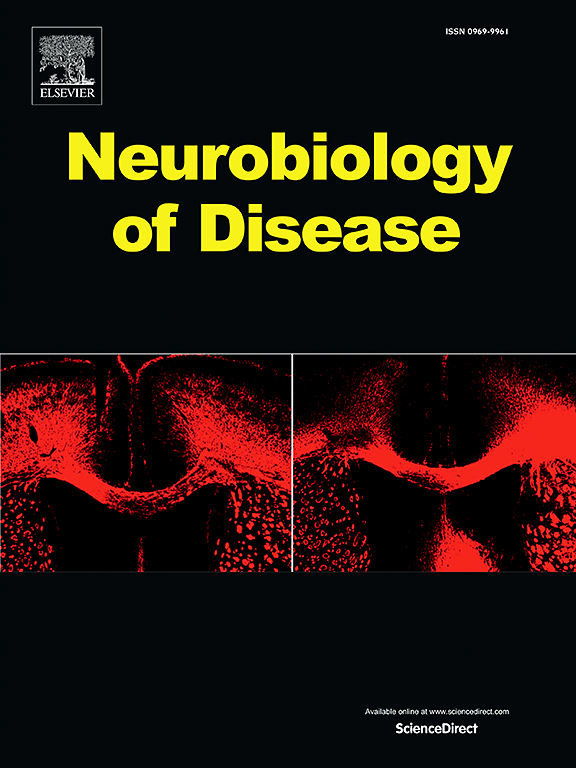Microstructural integrity of autonomic central nervous tracts is linked to cardiovascular health
IF 5.6
2区 医学
Q1 NEUROSCIENCES
引用次数: 0
Abstract
Introduction
The central autonomic network (CAN), which controls sympathetic and parasympathetic activity, plays a central role in the pathogenesis of cardiovascular disease and serves as a target for therapeutic approaches. This study investigates the association of microstructural integrity of white matter fibres representing the CAN with cardiovascular damage, risk and outcomes using a large population-based cohort study.
Methods
The microstructural integrity of the CAN was evaluated using magnetic resonance imaging (MRI) of the brain from the population-based UK Biobank study applying previously developed diffusion imaging data-processing techniques. Subsequently, measures of cardiac and vascular organ damage (i.e. left ventricular (LV) myocardial mass, LV wall myocardial thickness and arterial stiffness index) were correlated with the integrity of CAN fibres and other brain regions. Furthermore, the patterns of regional CAN associations with cardiovascular organ damage and major adverse cardiovascular events (MACE) following imaging were analysed. Both cortical and subcortical components of the CAN were examined separately.
Results
A total of 43,994 individuals were included in the analysis (mean age: 55.0 ± 7.5 years, 53 % females). The microstructural integrity of the CAN demonstrated stronger associations with cardiac and vascular organ damage parameters than with brain regions outside the CAN. In cortical CAN tracts, measures of cardiac and vascular damage were positively associated with the free water compartment, whereas a negative association existed for intra-axonal volume (all p < 0.001). Also, the proportion of free water in CAN fibres interconnecting the cingulum and the insular cortex was a strong predictor of MACE. A 10 % increase in the free-water compartment of these brain tracts was associated with a hazard ratio for MACE after imaging of 3.8 (95 % CI: 2.1–6.9; p < 0.001) and 4.2 (95 % CI: 2,1–8.4; p < 0.001), for left and right side respectively). Subcortical CAN components showed modest associations, particularly between increased intra-axonal volume and cardiac parameters.
Conclusion
Our findings indicate a distinct association between the integrity of brain networks regulating autonomic activity and cardiovascular health. Particularly, connections between the rostral-anterior cingulum and the insular cortex may be associated with higher risk for future MACE. Differential patterns were observed in cortical versus subcortical CAN structures, suggesting distinct pathophysiological roles within the heart-brain axis.
自主中枢神经束的微观结构完整性与心血管健康有关
中枢自主神经网络(CAN)控制交感神经和副交感神经活动,在心血管疾病的发病机制中起核心作用,并作为治疗方法的靶点。本研究通过一项大规模人群队列研究,调查了代表CAN的白质纤维的微观结构完整性与心血管损伤、风险和结果的关系。方法利用基于人群的英国生物银行研究的大脑磁共振成像(MRI)评估CAN的微观结构完整性,应用先前开发的扩散成像数据处理技术。随后,心脏和血管器官损伤的测量(即左心室(LV)心肌质量、左室壁心肌厚度和动脉僵硬指数)与CAN纤维和其他脑区域的完整性相关。此外,我们还分析了区域性CAN与心血管器官损伤和主要不良心血管事件(MACE)的相关模式。分别检测CAN的皮层和皮层下成分。结果共纳入43994例患者(平均年龄55.0±7.5岁,女性占53%)。CAN的显微结构完整性与心脏和血管器官损伤参数的相关性强于与CAN外脑区域的相关性。在皮质CAN束中,心脏和血管损伤的测量与自由水室呈正相关,而轴突内体积则存在负相关(p <;0.001)。此外,连接扣带和岛叶皮层的CAN纤维中自由水的比例是MACE的一个强有力的预测指标。这些脑束的自由水区增加10%,成像后MACE的风险比为3.8 (95% CI: 2.1-6.9;p & lt;0.001)和4.2 (95% CI: 2,1 - 8.4;p & lt;0.001),左侧和右侧分别为0.001)。皮层下CAN成分显示出适度的关联,特别是轴突内体积增加与心脏参数之间的关联。结论:我们的研究结果表明,调节自主神经活动的脑网络的完整性与心血管健康之间存在明显的关联。特别是,肩前扣带和岛叶皮质之间的连接可能与未来MACE的高风险相关。在皮层和皮层下CAN结构中观察到不同的模式,表明在心脑轴中具有不同的病理生理作用。
本文章由计算机程序翻译,如有差异,请以英文原文为准。
求助全文
约1分钟内获得全文
求助全文
来源期刊

Neurobiology of Disease
医学-神经科学
CiteScore
11.20
自引率
3.30%
发文量
270
审稿时长
76 days
期刊介绍:
Neurobiology of Disease is a major international journal at the interface between basic and clinical neuroscience. The journal provides a forum for the publication of top quality research papers on: molecular and cellular definitions of disease mechanisms, the neural systems and underpinning behavioral disorders, the genetics of inherited neurological and psychiatric diseases, nervous system aging, and findings relevant to the development of new therapies.
 求助内容:
求助内容: 应助结果提醒方式:
应助结果提醒方式:


